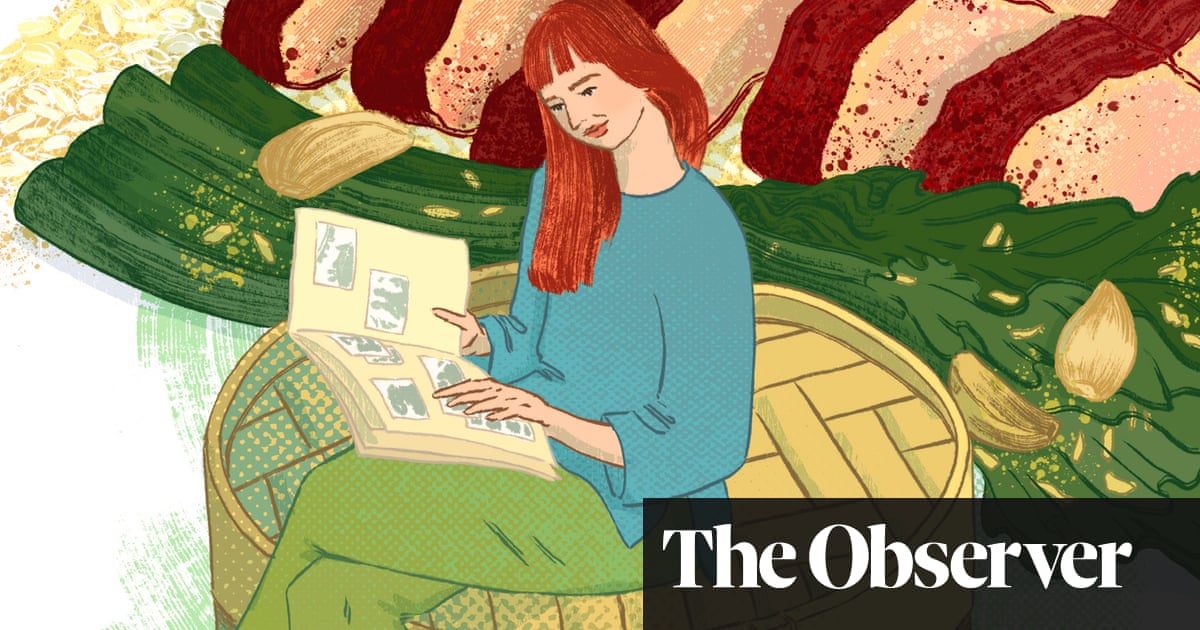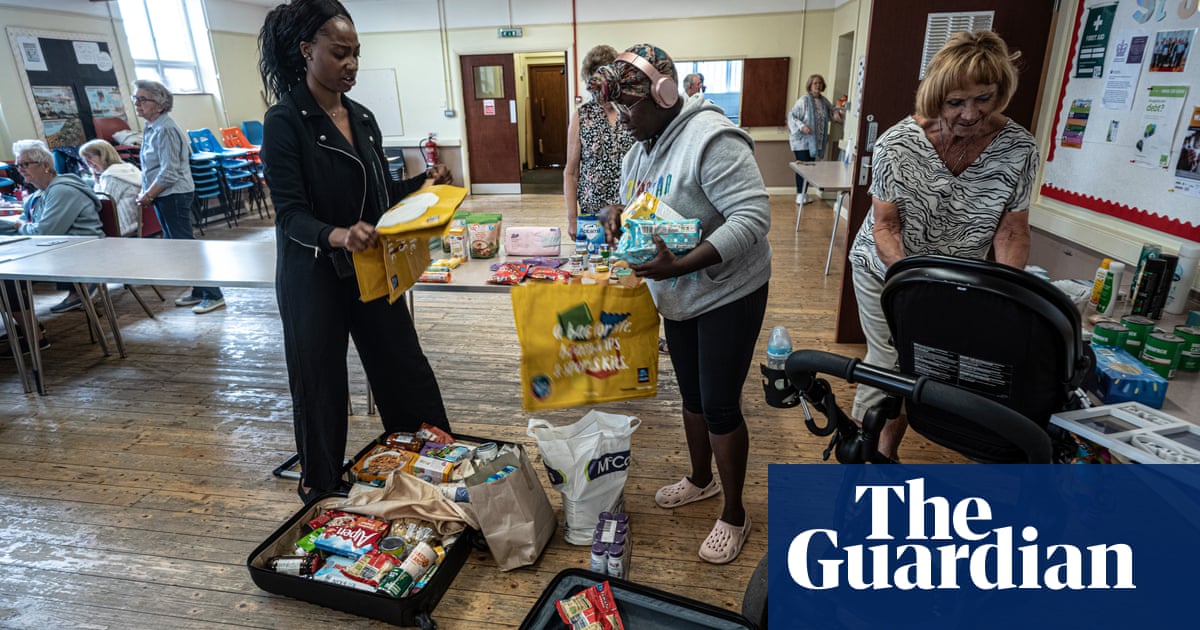
Hanrahan’s, Sheffield
On the surface of it, the problem was straightforward. Somehow, we’d all made it to the sixth form, an elevation we thought so magnificent – oh, the grandness of being allowed to drink Nescafé in free periods! – it was surely only right now to mark it with a minor increase in sophistication come Friday night. But the question was: how? Clubbing was one thing. We were avid for that, and went dancing in town twice a week in our cliff-top shoulder pads and scratchy white shoes. The bigger drama was the matter of what to do first. No longer would the pub do: that slow eking out of our Cinzano and lemonades, the better that we might not conk out too early later (alas, I usually did conk out too early).
A restaurant? For the longest time, the thought never occurred to us. For one thing, we had no money. For another, it was the 1980s and we lived in Sheffield. On the vaguely affordable side, there was curry and Chinese food, both of which were a bit too familiar to us to be fully glam, or there was Pizza Hut, which had at last opened a branch not far from where we lived. Pizza Hut was OK in our eyes – the words “deep pan” were new and fresh and slightly thrilling then – but this branch was next door to Tesco in a small shopping precinct, which really crushed the vibe on our Dorothy Perkins earrings and sky-blue eyeliner. Beyond this – and to us, it was like staring out across an ocean – there were basically only two other options, both more expensive: a wine bar called Mr Kite’s, where quiche was served and Phil Oakey out of the Human League had once been seen, and an American-style restaurant called Hanrahan’s, where men with Buck’s Fizz hairstyles and (I may have imagined this) salmon-pink ties served ridiculous cocktails to footballers (whose wives had not yet been invented), solicitors and dealers of secondhand Jaguars (ten bob millionaires, as they were known then).
Of this pair, it was Hanrahan’s that seemed to us like a place worth saving up for, and henceforth it was our chosen venue for the celebration of birthdays and particularly significant events on the boy front; I used the money I earned in my Saturday job at Boots. Housed in a redbrick Georgian building that had once been a nurses’ home, it was close to the university, which made it cool in our eyes (we were always eyeing the Union up hopefully), and though we inevitably laughed as we ordered A Slow Comfortable Screw Against The Wall – in case you don’t know, this is a long, Galliano-based drink – we hadn’t yet learned to be sniffy about such delights. And we loved the menu, too, which encompassed modish offerings like club sandwiches and barbecue ribs. The sweet, sticky softness of those ribs! Every visit meant war for me. To order this dish was extremely hazardous if I was wearing my best white, sleeveless polo neck. On the other hand, not to order it felt like a crime – or perhaps I mean a punishment.
Hanrahan’s finally closed in 2008. The building briefly housed a Loch Fyne restaurant; the last I heard, it is to be converted into flats. Looking back, of course, I realise that it was completely unoriginal even during what I will call its heyday; hundreds of places just like it must have sprung up around the country about then, inspired by movies such as Desperately Seeking Susan, St Elmo’s Fire and Cocktail. I expect, too, that if I tasted its menu now, I’d pick holes in everything on it (all that iceberg lettuce and bottled thousand island dressing). But I loved it then, and in memory, I love it now.
I miss those evenings out, every one of which offered the prospect of something, even if only a hangover; when we were so close and so relatively innocent, able to enjoy things so purely and sweetly. And I see in those nights, too, shades of the future me, a woman who would rather be in a restaurant with friends or the man she loves than doing just about anything else on earth (I said just about). Hanrahan’s, in its small way, played a part in making me what I am today: a person who eats with her fingers should this be required, even if doing so brings with it the danger she will ruin her freshly laundered clothes.
Rachel Cooke
Aziz Pandesia, Oxford
Aziz Pandesia opened in 2006, the same year that I arrived in Oxford as an undergraduate. On my first day, after my parents had helped me unload bags and boxes into my tiny single bedroom with its brown carpet and college-issued bedlinen, my dad pressed a £20 note into my hand. “Get a deshi takeaway for dinner,” he instructed as we all tried not to cry. Then he and my mum drove the 200 miles back to the Aire Valley in West Yorkshire, leaving me alone and already homesick.
I didn’t get a Bangladeshi takeaway that night, deciding instead to meet other freshers in the dining hall. But the south Asian restaurants of Oxford did become a source of comfort during my time as a student: Chutneys in the city centre, Mirch Masala on Cowley Road, but none more so than the Aziz Pandesia. The whitewashed, glass-fronted building stood elegantly on Folly Bridge in south Oxford, complete with decked pontoon where diners watched boats and swans sail by as they enjoyed the upmarket Bangladeshi and “pan-Asian” menu.
Crucially, Aziz Pandesia was a few minutes’ walk away from college accommodation in my second and third year. It was where I went when I craved a taste of something close to home. The Bangladeshi dishes were familiar enough, the waiters came to know me and I began to visit as much for the warmth and welcome as the food. Being on a budget, the restaurant was a treat, but on visits back home my dad would slip me another £20 before I got the return train and I’d oblige with dinner from Aziz Pandesia that evening.
My obsession rubbed off on my housemates. We all remember our old orders: mine was a chicken pathia, deliciously hot and sweet; Leah went for the same but with prawns. Mary opted for the lamb bhuna and mishti naan and Rosie was keen on lamb rogan josh. To save money we would order the mains as takeaways, cooking our own rice in the college kitchen.
We celebrated Anne’s 21st birthday there, and the end of our final exams. It felt especially fancy, with white tablecloths, heavy cutlery and glass jugs that we constantly asked to be refilled with tap water. I was too shy to speak to staff in Bangla though now I wish I had tried and been able to communicate just how much the place had come to mean to me over the years.
I moved away after graduating and never had a chance to visit again. Soon after I left, Aziz Pandesia became a Mediterranean restaurant called Riviera, after a back and forth with the council over opening hours for the pontoon led it to be sublet to a new restaurateur. A sister restaurant on Cowley Road, known simply as Aziz, later moved to Headington. Today, 1 Folly Bridge is home to The Folly, offering river cruises alongside a modern British menu of salt-baked cauliflower and lamb pavé.
On a recent visit back to Oxford I thought about making a pilgrimage down Abingdon Road and over Folly Bridge to revisit my student halls, the place I met some of my closest friends, and the man I eventually ended up marrying. I imagined seeing myself in the common room watching Neighbours, cooking with friends on the two hotplates we called a kitchen, or perhaps even bumping into myself on the walk back from Aziz Pandesia with change from a £20, clutching a white plastic bag with a takeaway container inside so hot that I feared the bag would melt on to it. I didn’t go in the end; the memories are vivid enough to sustain me.
Shahnaz Ahsan
Water Margin, London
Pork, duck, rice. Choi sum. Wonton soup. Chinese tea. At the end, the waiter would bring a plate of orange segments in their skin, as if we needed to hydrate after playing a game of football, and we would lurch out into Golders Green as if we’d won the cup.
I hadn’t realised the significance the first time my boyfriend took me to Water Margin, a Chinese restaurant he’d been visiting with his family since the mid-80s. It was like a proposal, I see now, like handing me a key. We ordered the food his dad had always ordered, we had the fabulous time they’d always had. I must have been in my earliest 20s and still new to restaurants then. White tablecloths and waiters, they still hold that glorious allure for me, but back then the glamour was almost overwhelming. I went to restaurants on special occasions only, while his family went on regular Sunday nights, or when his mum didn’t feel like cooking. To pop, casually, to a foreign high street for a “bite to eat”, I loved it, I still love it, it’s one of the things in my life that I love the most.
I say foreign – though Golders Green was close to where I grew up, and paved with Jewish bakeries, Jewish shops, a Starbucks teeming with the big girls from school, it remained unfamiliar and largely closed off to me, a secular Jew. A Cantonese restaurant, with its char siu pork, would open it up to me, in that way that good restaurants do. In the US there’s a Jewish tradition of Chinese food – the Jewish way of celebrating Christmas, for example, is in the safety of a Chinese restaurant where not only are you with other outsiders but the food is more likely to be kosher – there’s very little dairy, so no mixing of milk and meat. Plus the pork and prawns were usually cut up finely and hidden inside a dumpling, so you could argue plausible deniability. Here in Golders Green, a suburb famous for its Jewish communities, was the first place I noticed that particular mixing in the UK, and it was quietly thrilling.
We went to Water Margin a lot after that. We went by ourselves, we went with his family, we went with my family, we went all together. We saw Vanessa Feltz there a few times, which was funny. We went with our friends, later we went with our tiny daughter, who would calmly rip the fat from the duck and suck the orange segments dry. And then one day, it closed. No warning. The sign stayed up. We tried visiting a couple of times, calling, closed. In 2016 Feltz wrote an obituary to the restaurant in the Daily Express, saying her family had been eating there since 1976. “You know how when your grandma or mother passes away and you gradually realise you’ll never taste their apple strudel or yorkshire pudding again? After 40 years … I feel a very similar sense of loss and even existential despair. Without warning or explanation our beloved Water Margin has closed its doors. We will never taste its like again.”
How do you describe the grief for a closed down restaurant? What is the word for it? I’ve mourned too many in my life now, I’ve had too many last meals. Places like the cathedral to chips and Formica, the New Piccadilly cafe at the bottom of Soho, which closed in 2007, or my boyfriend’s restaurant Monty’s Deli, which died during Covid (I type now surrounded by his hand-painted refreshments signs), or countless coffee shops which hosted the significant conversations and desserts of my life, knocked down to make way for a nice new Pret. I’ve seen from the inside how hard it is to keep a restaurant open, how rising rent and rates and food costs eat away at your profits, and how labour shortages eat away at staff – it’s the worst time in recent history to run a restaurant, so it’s no wonder so many shut.
And I feel for the owners, in debt and in trouble, but I feel for the patrons too, when one of our places disappears. It’s not just the food we miss, it’s the sense of walking in and feeling held by something tight and good, the shitty music, the warmth after the rain outside. And the cutleried stages where those conversations played out, where traditions formed, the manager cooing over a baby, or quickly building a table for six. As the industry wobbles, won’t someone please think of us diners, grieving our way down glassy high streets, mourning a bowl of soup?
Eva Wiseman












